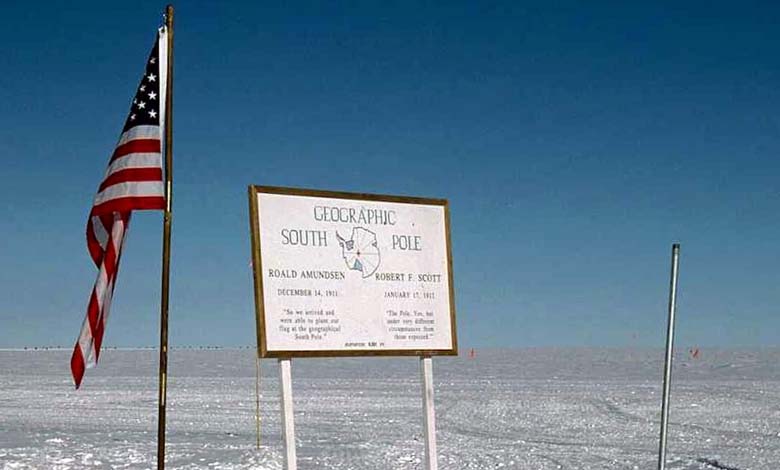America First in Antarctica: The South Pole Enters the Geopolitical Arena

U.S. attention is no longer confined to Greenland and the Arctic. The “America First” strategy is now extending to Antarctica, which is becoming a new front in global power competition.
The growing presence of China and Russia on the southern continent has raised alarms in Washington, revealing that a region long seen as geopolitically dormant is now ripe for rivalry among great powers.
-
Henry Kissinger and Latin America: 5 Sins That Changed the Course of History
-
NGAD: The American Sixth-Generation Fighter between Domination and Financial Drain
In March, China announced plans to build a new polar research station in Antarctica. Russia, simultaneously, revealed intentions to build another station, renovate an old one, and construct an airport.
According to Foreign Policy, this will be China’s sixth station in Antarctica, complementing an airport under construction since 2018. Russia currently operates six active stations and maintains five inactive ones. President Vladimir Putin confirmed in January 2024 that the Vostok Station had been successfully modernized.
-
Air Force Two: Discover the Plane of America’s Second-in-Command
-
2025… How Do Americans View the New Year?
However, as Foreign Policy notes, these developments go beyond symbolism. In a continent inhospitable to permanent habitation, research stations are the only legitimate means for nations to maintain a presence, assert territorial claims, and engage in dual-use operations, despite the 1959 Antarctic Treaty prohibiting militarization.
America’s Polar Advantage Is Slipping
The U.S. has long enjoyed a strategic advantage in Antarctica through its research outposts, crucial for scientific leadership. It also led the creation and maintenance of the current international legal regime, but its influence is now diminishing.
-
The Mystery of the American Military Plane… An Unfinished Secret Mission 63 Years Ago
-
Washington Accuses Two Individuals of Supplying Weapons to Iran That Killed 3 Americans
When the Antarctic Treaty was signed, U.S. Secretary of State John Foster Dulles aimed to prevent the Cold War from extending to the white continent. But in recent decades, China has pushed the treaty’s limits — and in some cases, overstepped them.
This approach aligns with China’s “military-civil fusion” doctrine. The 2020 edition of the PLA’s Science of Military Strategy states that this fusion is the primary pathway for major powers to establish a military foothold in polar regions.
In 2014, President Xi Jinping stated that China would seek to “understand, protect, and exploit” Antarctica. According to Zhou Tan Zhu, head of China’s polar affairs bureau, the international community needs time to “psychologically adjust” to the new reality.
“In Antarctica,” he said, “we are here for resource potential and its utilization.”
-
The Week of Reckoning in America… Trump’s Loyalty Philosophy under Scrutiny
-
The Future of Dominance: How Military Realignment Enhances America’s Power
A Geopolitical Chess Game
Given China’s persistent efforts to reshape the rules in Antarctica, Washington and its allies must reassess their strategies.
The Madrid Protocol permanently bans resource extraction, but a popular theory in Chinese academia claims it expires in 2048, opening the door to mining. In truth, it is only subject to review.
Strategic circles in Beijing are full of speculation about untapped resource potential in Antarctica and the Southern Ocean, believed to hold vast reserves of energy, minerals, and fish.
-
Critical Points Mentioned in an American Report on the ISIS Organization
-
The “ISIS Soldier”: America Concludes the “Dark Story”
Anne-Marie Brady, professor at the University of Canterbury, says China views its growing polar presence as part of securing access to global resource shares.
According to Guo Beiqing, professor at the Ocean University of China: “China’s Antarctic exploration is like a chess game — it’s crucial to have a position. We don’t know when the game begins, but we must be on the board.”
-
Can Biden Succeed in Stopping the Gaza War? An American Newspaper Responds
-
Blinken’s Call: Is Sudan climbing the Swiss Mountains under American pressure?
Washington’s Strategic Inertia
Despite rising competition, Washington has shown surprising passivity. The Biden administration did not challenge China’s reinterpretation of the Madrid Protocol or its efforts to undermine marine conservation in the Southern Ocean.
Since 2020, the U.S. has conducted no surprise inspections, as allowed by the treaty, of Chinese, Russian, or any other non-U.S. station.
Even its renewed Arctic focus has yielded no new investment in Antarctica. The U.S. Coast Guard’s Polar Security Cutter Program, aimed at revitalizing its icebreaker fleet, has faced delays, leaving just one heavy icebreaker in service.
-
After America: Is it Time to Transform NATO into a European Organization?
-
Warning of a “Terrorist Attack”: State of Alert in American Bases in Europe
Toward a U.S. Antarctic Strategy
The U.S. should develop a comprehensive national strategy for Antarctica, modeled after the Trump-era Arctic strategy.
This would include:
- Funding and modernizing U.S. research stations.
- Building new outposts to expand U.S. influence.
- Defending the current legal framework governing Antarctica.
- Preparing for a breakdown of the Antarctic Treaty or Madrid Protocol.
-
Statue of Liberty in America: Was it Originally Meant to be Egyptian?
-
Sanctions on Iran and Aid to Israel… “American Representatives Swim Against the Biden Current”
It should also prioritize:
- The construction of advanced icebreakers, including nuclear-powered ones.
- Deployment of drones and underwater vehicles by the U.S. Navy and Coast Guard.
- Specialized polar training for Army and Marine units.
- Seismic mapping, oceanic surveys, and early claims on identified resources, if the treaty collapses.
Finally, the U.S. should form an alliance with like-minded nations — Argentina, Australia, Chile, and New Zealand — to establish and enforce new norms in their respective Antarctic zones.
-
Islamic organizations launch a campaign against the American president… Why?
-
Launching of two ballistic missiles towards an American destroyer in the Gulf of Aden… Will the “Ship War” ignite?












